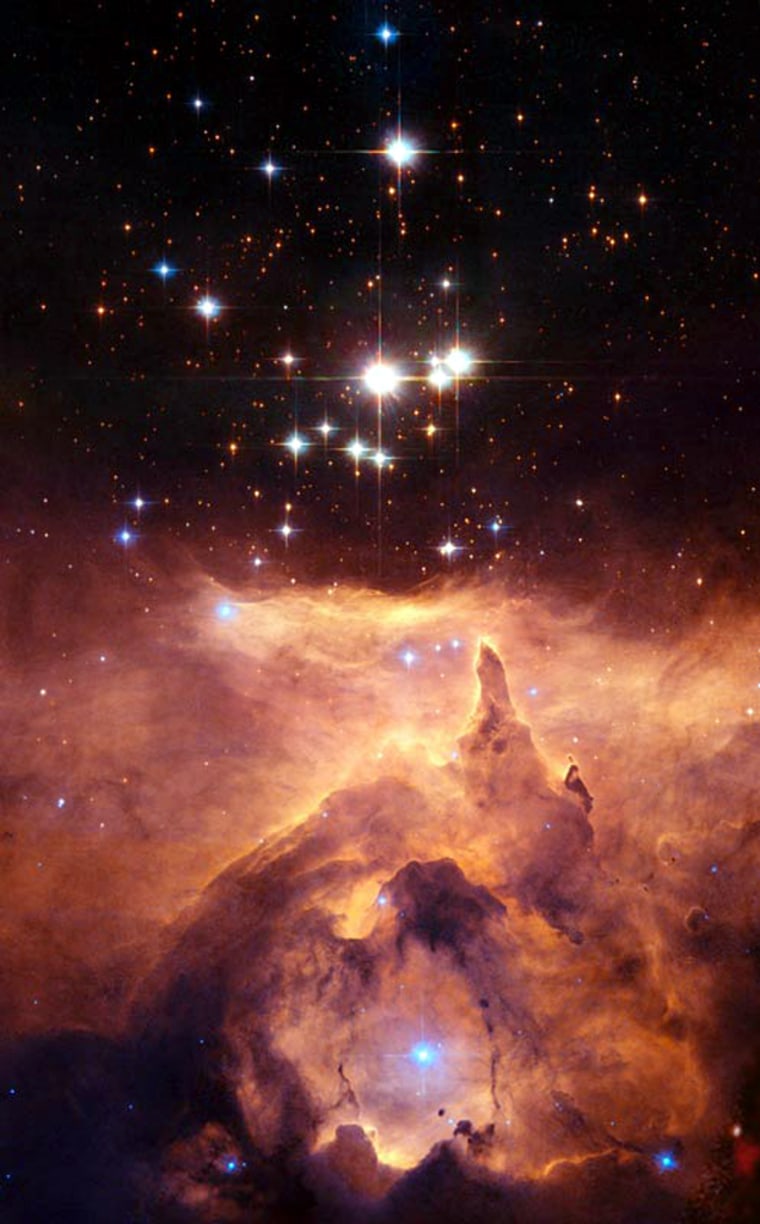A monster star thought to be among the most massive in our Milky Way galaxy is actually slimmer than expected because it’s actually a pair of twins, astronomers announced today.
Researchers once believed the star—known as Pismis 24-1—loomed large with a mass between 200 and 300 times that of the sun. But more accurate measurements by the Hubble Space Telescope found not one, but two stars in Pismis 24-1’s location, effectively cutting the estimated weight in half to about 100 solar masses.
The stellar find is part of a study to determine the upper mass limit for stars.
Pismis 24-1 sits in star cluster at the core of the emission nebula NGC 6357 some 8,000 light-years from Earth towards the constellation Sagittarius. Young hot stars spew intense ultraviolet radiation into the nebula, heating up the surrounding interstellar gas to create a sort of local bubble, Hubble researchers said in a statement.
Astronomer Jesús Maíz Apellániz, of Spain’s Instituto de Astrofísica de Andalucía, led the study to weigh Pismis 24-1. His team also managed to gauge the mass of a third nearby star, dubbed Pismis 24-1, and pegged that object at about 100 solar masses.
The research, which relied on images taken by Hubble’s Advanced Camera for Surveys, was presented this month at the Massive Stars Workshop in Argentina.
The trio of heavyweight stars within the Pismis 24 system is a rare find for such a small stellar cluster, Hubble researchers said. For every discovery of a 65-solar mass star, some 18,000 sun-mass stars are formed, they added.
The lifecycle of a 65-solar mass star ends after just three million years, though a sun-mass star can burn for more than 3,000 times that. Our own sun is considered middle-aged at 4.6 billion years old.
It’s possible that Pismis 24-1 may include a third star based on some ground observations, Hubble researchers added. If true, each of the three stars would average about 70 stellar masses, but remain on the Top 25 roster of the Milky Way’s most massive stars.
